Unveiling the Desert’s Jewel: The Enigmatic Gila Monster
Deep within the sun-baked landscapes of the American Southwest and northwestern Mexico lurks a creature of striking beauty and ancient lineage: the Gila Monster. With its vibrant, beaded skin and deliberate movements, this reptile often evokes a mix of fascination and apprehension. Far from being a mindless menace, the Gila Monster is a vital, highly specialized predator, a true marvel of desert adaptation, and one of only two venomous lizard species native to North America. Let us embark on a journey to understand this remarkable animal, peeling back layers of myth to reveal the scientific truths behind its captivating existence.
A Portrait of the Gila Monster: Basic Biology
Physical Characteristics: A Living Warning Sign
The Gila Monster (Heloderma suspectum) is instantly recognizable. Averaging around 18 to 22 inches (45 to 56 cm) in length and weighing between 1.5 to 3 pounds (0.7 to 1.4 kg), it possesses a stout body, a broad head, and a short, thick tail. Its most distinctive feature is its skin, composed of osteoderms, which are bone-like plates covered by non-overlapping, bead-like scales. This unique texture gives it a rugged, armored appearance. The coloration is a striking mosaic of black with irregular patterns of orange, pink, or yellow, serving as a clear warning to potential predators. This aposematic coloration is a classic example of nature’s way of signaling danger.
Unlike snakes, Gila Monsters do not possess hollow fangs for injecting venom. Instead, their venom is produced in glands in the lower jaw and delivered through grooves in their sharp, recurved teeth. When a Gila Monster bites, it clamps down firmly and chews, allowing the venom to seep into the wound. While painful, their bite is rarely fatal to humans, though it can cause significant discomfort and other symptoms. These fascinating reptiles can live for an impressive 20 to 30 years in captivity, a testament to their robust physiology.
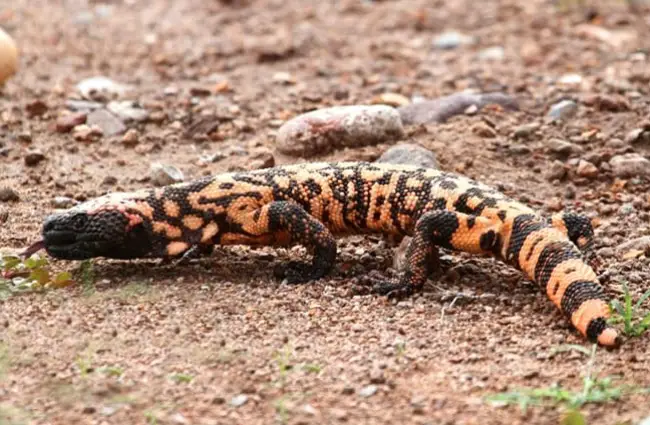
Where the Wild Things Are: Habitat and Distribution
The Gila Monster is a creature of the arid and semi-arid regions of the southwestern United States and northwestern Mexico. Its primary range extends across Arizona, with populations also found in parts of southeastern California, southern Nevada, southwestern Utah, and extreme southwestern New Mexico. South of the border, it inhabits the Sonoran Desert of Sonora, Mexico.
These lizards thrive in a variety of desert and scrubland habitats, including:
- Sonoran Desert: Characterized by saguaro cacti and palo verde trees.
- Mojave Desert: Known for its Joshua trees.
- Chihuahuan Desert: Less common here, but present in some areas.
- Rocky foothills and canyons: Providing ample crevices and shelter.
- Washes and arroyos: Dry riverbeds that offer cooler, moister microclimates.
They prefer areas with sufficient cover, such as rocks, shrubs, and cacti, which provide shade and protection from predators. Gila Monsters are masters of thermal regulation, spending a significant portion of their lives underground in burrows they either excavate themselves or appropriate from other animals like tortoises or rodents. These subterranean retreats offer refuge from the scorching summer heat and the occasional winter chill, allowing them to maintain a stable body temperature.
Life in the Desert: Behavior and Ecology
A Feast for the Gila Monster: Diet and Hunting
As a carnivorous predator, the Gila Monster plays a crucial role in its ecosystem. Its diet is varied, primarily consisting of:
- Eggs: A favorite food, including those of birds and other reptiles.
- Small mammals: Rodents, young rabbits, and other small desert dwellers.
- Young birds: Hatchlings and nestlings found in ground nests.
- Other reptiles: Including smaller lizards and snakes.
- Insects: Occasionally consumed, especially by younger individuals.
Gila Monsters are not swift hunters. Instead, they employ a strategy of opportunistic predation, relying heavily on their exceptional sense of smell, aided by their forked tongue, which “tastes” the air for chemical cues. They are often ambush predators, patiently waiting for prey or slowly tracking down nests. Due to their slow metabolism and the ability to store fat in their tails, Gila Monsters do not need to eat frequently. A few substantial meals a year can sustain them, allowing them to endure long periods between successful hunts.
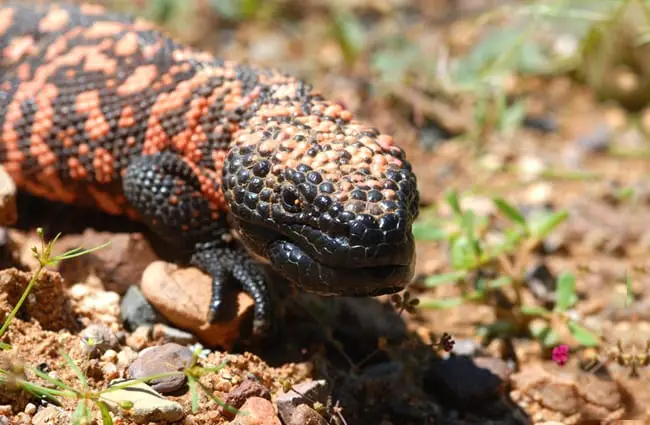
The Dance of Life: Mating and Reproduction
The reproductive cycle of the Gila Monster is a fascinating display of desert life. Mating typically occurs in late spring to early summer, usually between April and June. During this period, males engage in ritualistic combat to establish dominance and win the right to mate with females. These wrestling matches involve pushing, biting, and rolling, often lasting for several minutes, with the stronger male eventually pinning his opponent.
Following successful mating, the female will lay a clutch of 2 to 12 eggs, usually in July or August. These eggs are deposited in an underground nest, often in sandy soil or under rocks, where they are protected from extreme temperatures and predators. The incubation period lasts approximately 4 to 5 months. Hatchlings emerge fully formed and independent, resembling miniature versions of the adults, complete with their distinctive coloration. They receive no parental care and must immediately begin their solitary lives, foraging for small insects and eggs.
Evolutionary Journey and Ecological Role
Ancient Lineage: A Glimpse into the Past
The Gila Monster belongs to the family Helodermatidae, an ancient lineage of lizards that includes only one other living species, the Mexican Beaded Lizard (Heloderma horridum). This family represents a unique evolutionary branch, with fossil records indicating their presence in North America for millions of years. Their venom delivery system, while distinct from snakes, is a testament to convergent evolution, where similar adaptations arise independently in different lineages. Studying their genetics and morphology provides valuable insights into the evolution of venom in reptiles and the diversification of lizard species across arid environments.
Their adaptations, such as their robust build, fat storage capabilities, and ability to withstand extreme temperatures, are finely tuned results of millennia of evolution in harsh desert conditions. They are living relics, offering a window into the deep past of desert ecosystems.
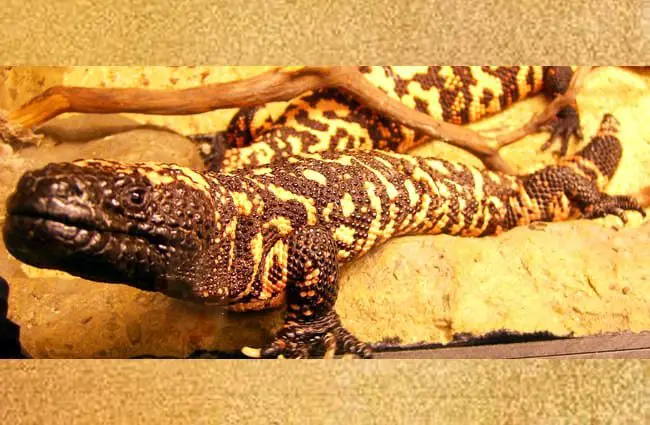
Desert Architect: Contribution to the Ecosystem
Despite their relatively low numbers and secretive nature, Gila Monsters are important components of their desert ecosystems. As predators, they help regulate the populations of small mammals, birds, and other reptiles, preventing overpopulation and maintaining ecological balance. Their occasional scavenging of carrion also contributes to nutrient cycling within the desert. They are generally solitary animals and tend to avoid confrontation, interacting with other species primarily through their roles as predator or prey, though they have few natural predators as adults due to their venom and warning coloration.
Their burrowing activities, while primarily for personal shelter, can also create microhabitats that benefit other small invertebrates and reptiles, subtly influencing the physical structure of their environment. The presence of a healthy Gila Monster population is often an indicator of a thriving and balanced desert ecosystem.
Gila Monsters and Humans: Coexistence and Conservation
Cultural Significance: Legends and Lore
For centuries, the Gila Monster has held a place in the folklore and cultural narratives of indigenous peoples of the Southwest. Many Native American tribes revered the Gila Monster, often associating it with spiritual power, healing, or even death. Some legends depicted it as a sacred creature, while others warned of its venomous bite, weaving tales that underscored respect for its dangerous nature. Modern perceptions, however, have often been clouded by misinformation, leading to unwarranted fear and persecution. Understanding its true nature helps dispel these myths and fosters a more informed appreciation for this unique reptile.
Encountering a Gila Monster: What to Do (and Not Do)
For hikers, outdoor enthusiasts, or anyone venturing into Gila Monster territory, an encounter with this magnificent creature can be a memorable experience. However, it is crucial to know how to react:
- Observe from a distance: Gila Monsters are shy and generally non-aggressive. If you spot one, admire it from afar.
- Do not approach or provoke: Never attempt to touch, handle, or harass a Gila Monster. They will only bite if they feel threatened or are cornered.
- If bitten:
- The bite is painful, causing intense localized pain, swelling, nausea, and weakness. While rarely fatal, medical attention is necessary.
- The lizard may clamp down stubbornly. Do not panic. Try to dislodge it by prying its jaws open with a stick or by immersing the lizard and the bitten limb in water.
- Seek immediate medical attention. Clean the wound and immobilize the affected limb.
- Legal Protection: Gila Monsters are protected species throughout much of their range. It is illegal to harm, harass, or collect them. Their conservation status underscores the importance of leaving them undisturbed in their natural habitat.
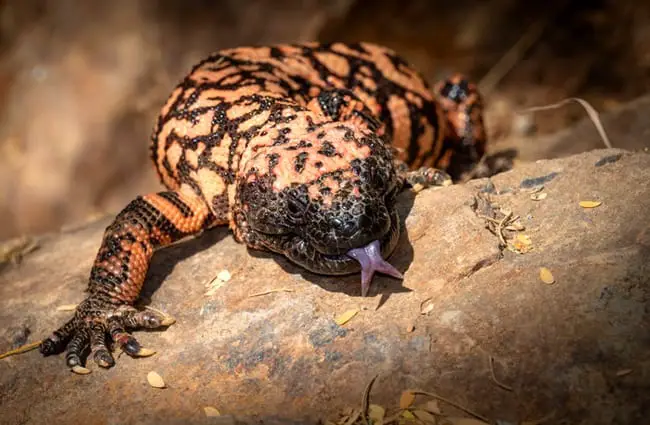
Caring for the Desert Dweller: Insights for Zookeepers
For zookeepers entrusted with the care of Gila Monsters, providing an environment that mimics their natural habitat is paramount to their health and well-being.
Creating the Ideal Environment
- Enclosure Requirements:
- A spacious, secure enclosure is essential, preventing escape and providing ample room for movement.
- A substrate of sand, soil, or cypress mulch allows for burrowing, a natural behavior.
- Numerous hiding spots, such as rock caves, hollow logs, or artificial burrows, are crucial for security and stress reduction.
- While not arboreal, some climbing opportunities like sturdy branches or rocks can provide enrichment.
- Temperature and Humidity:
- A thermal gradient is vital, with a basking spot reaching 90-95°F (32-35°C) and cooler areas around 75-80°F (24-27°C).
- Nighttime temperatures should not drop below 70°F (21°C).
- Humidity should be relatively low, typical of desert environments, but a humid hide box with damp sphagnum moss can aid in shedding.
- Diet in Captivity:
- Gila Monsters are fed pre-killed rodents (mice, rats), chicks, or eggs, appropriate to their size.
- Feeding frequency is low, typically once every 1-3 weeks for adults, depending on their condition and the size of the meal.
- Supplements of calcium and multivitamins are necessary to prevent nutritional deficiencies.
- Water: A shallow, heavy water dish should always be available, providing fresh water. Occasional misting can encourage drinking and aid in hydration.
Health and Handling
- Monitoring: Zookeepers must regularly monitor the Gila Monster’s weight, appetite, activity levels, and overall demeanor. Any changes could indicate illness or stress. Shedding cycles should also be observed for completeness.
- Handling: Due to their venomous nature, handling should be minimized and only performed when absolutely necessary for health checks or enclosure maintenance. When handling, specialized tools such as thick gloves, snake hooks, or tongs are used to ensure the safety of both the animal and the keeper.
- Enrichment: Providing environmental enrichment, such as rearranging decor, offering new hiding spots, or varying feeding locations, can stimulate natural behaviors and prevent boredom in captivity.
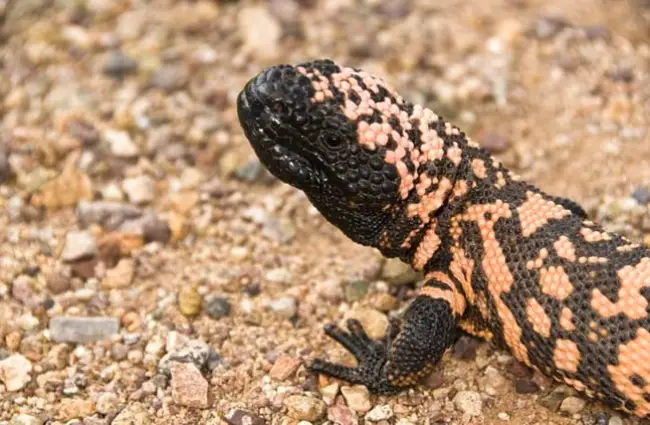
Fascinating Facts: Unearthing Gila Monster Secrets
The Gila Monster is a creature full of surprises. Here is a list of intriguing facts that highlight its unique adaptations and ecological significance:
- The Gila Monster is one of only two venomous lizard species found in North America, the other being its close relative, the Mexican Beaded Lizard.
- Its venom is a complex cocktail of neurotoxins, enzymes, and other compounds, causing intense pain and swelling but is rarely lethal to healthy adult humans.
- Gila Monsters have an incredibly slow metabolism, allowing them to survive for extended periods, sometimes months, without food, especially after a large meal.
- They possess an excellent sense of smell, using their forked tongue to “taste” the air and locate prey or mates.
- Their distinctive beaded skin is made up of osteoderms, which are bony plates embedded in the dermis, providing a form of natural armor.
- Gila Monsters are primarily crepuscular (active at dawn and dusk) or nocturnal during the hottest summer months, shifting to diurnal activity during cooler spring and fall periods.
- A compound called exendin-4, derived from Gila Monster venom, has been synthesized and developed into a medication (exenatide) used to treat type 2 diabetes, demonstrating the potential medical value of studying venomous animals.
- Despite their somewhat bulky appearance, Gila Monsters can move with surprising agility when necessary, especially during mating rituals or when pursuing prey.
- They are known to store significant amounts of fat in their tails, which acts as an energy reserve during periods of food scarcity or brumation (a state of inactivity similar to hibernation in reptiles).
- Their scientific name, Heloderma suspectum, means “studded skin” and “suspected,” referring to the initial suspicion that the lizard was venomous before it was scientifically confirmed.
Guardians of the Arid Lands: A Call for Respect and Conservation
The Gila Monster stands as a testament to the incredible diversity and resilience of life in the desert. Far from being a creature to fear, it is an integral part of its ecosystem, a living piece of evolutionary history, and a source of potential scientific discovery. By understanding its biology, behavior, and ecological role, we can move beyond ancient fears and embrace a deeper appreciation for this magnificent reptile.
Protecting the Gila Monster means protecting its fragile desert habitat from human encroachment, habitat destruction, and illegal collection. As we continue to explore and inhabit these arid lands, it is our responsibility to ensure that this jewel of the desert continues to thrive, a vibrant symbol of the wild beauty of the American Southwest for generations to come.

![Red Angus Closeup of a beautiful Red Angus cowPhoto by: U.S. Department of Agriculture [pubic domain]https://creativecommons.org/licenses/by/2.0/](https://animals.net/wp-content/uploads/2020/03/Red-Angus-4-238x178.jpg)




![Red Angus Closeup of a beautiful Red Angus cowPhoto by: U.S. Department of Agriculture [pubic domain]https://creativecommons.org/licenses/by/2.0/](https://animals.net/wp-content/uploads/2020/03/Red-Angus-4-100x75.jpg)

